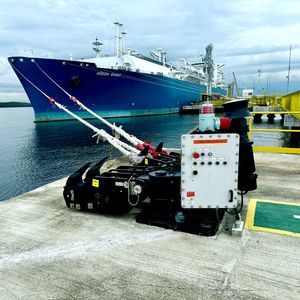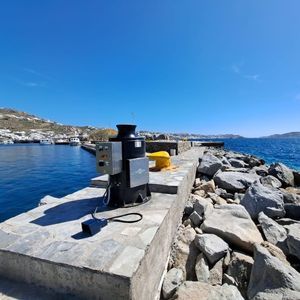
- Harbors and port terminals
- Port equipment
- Ship-to-shore safety link LNG transfer system
- Straatman Mooring Systems
Ship-to-shore safety link LNG transfer system SSL
Add to favorites
Compare this product
Description
Ship-to-shore link systems are the backbone of maritime connectivity, ensuring that ships can communicate effectively with onshore facilities for navigation, safety, and operational efficiency. The Ship-Shore Link (SSL) plays therefore a pivotal role in enhancing safety during LNG transfer operations. It effectively mitigates risks associated with fires, explosions, or environmental hazards. The fundamental objective of the Ship-to-Shore Link system is to facilitate the concurrent emergency shutdown of both ship and shore plants should any abnormality arise, as detected by the ship or shore Safety Instrumented System (SIS).
Straatman's innovative SafeCom Ship-to-Shore Link stands out as a high-quality system tailored to client specifications. Recognizing the paramount importance of the ship shore link during LNG transfers, we ensure a variety of sizes and configurations of the SSL system. Moreover, we provide standby services for added reliability.
To maintain global compatibility, Straatman's SafeCom SSL is meticulously constructed in compliance with ISO 28460, ISO 20519, SIGTTO guidelines, and SGMF. This guarantees seamless integration with third-party systems that also adhere to the aforementioned guidelines. Our Ship-to-Shore Link is compatible with multiple links, including:
6 pin Furukawa Fibre Optic Link
37 pin Pyle Electric Link
4 pin Pyle Earth Bonding
6 pin Miyaki Electric Link
5 pin SIGTTO Electric Link (in both Supplier and Receiver Modes)
2 pin ADN Link
Pneumatic Link
ITT Cannon Link
Catalogs
Mooring & Berthing Systems
13 Pages
SafeCom Ship-To-Shore Link
3 Pages
Other Straatman Mooring Systems products
Mooring & Berthing Systems
*Prices are pre-tax. They exclude delivery charges and customs duties and do not include additional charges for installation or activation options. Prices are indicative only and may vary by country, with changes to the cost of raw materials and exchange rates.











